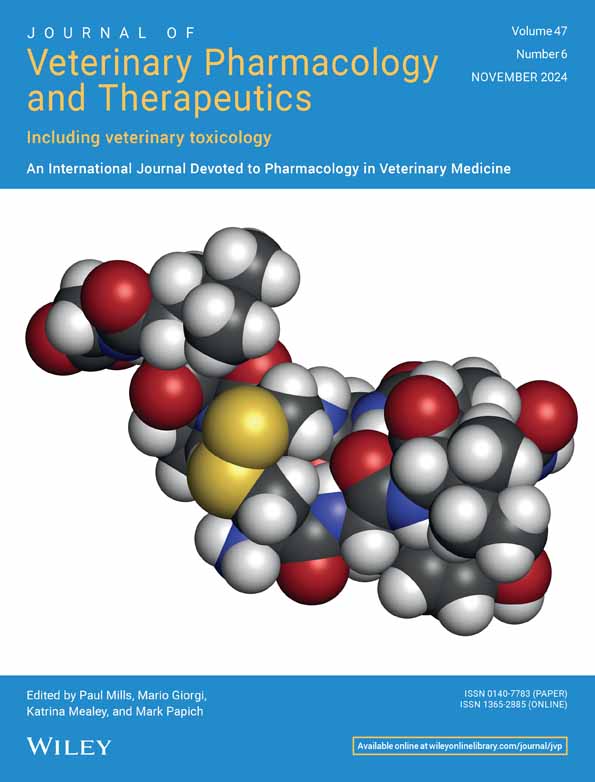Single intravenous and oral dose pharmacokinetics of the antiseizure medication brivaracetam in healthy cats
Abstract
The number of available antiseizure medications with demonstrated efficacy in cats is limited. As such, there is a need to evaluate the pharmacokinetics of newer medications so that proper dosing regimens can be made. Brivaracetam (BRV) is a more potent analogue of levetiracetam, and is Food and Drug Administration approved for use in people. The goal of this study was to describe the pharmacokinetics of intravenous and oral doses of BRV in healthy cats. A cross-over study involving eight healthy cats, that were administered 10 mg of BRV intravenously as a bolus and orally in the fasted state. Blood samples were collected over 24 h. Analysis was performed using liquid chromatography-mass spectrometry. Data were subjected to non-compartmental analysis. Median (min–max) of maximal concentration, time to maximal concentration, area under the curve, elimination half-life and oral absolute bioavailability were 902 (682–1036) ng/mL, 0.6 (0.5–2.0) h, 6.4 (5.2–7.2) h, 8145 (6669–9351) ng × h/mL and 100% (85–110) respectively. BRV appeared to be well tolerated by all cats. A single dose of BRV is well tolerated both orally and intravenously. Maximal concentrations are produced rapidly and within the human reference interval considered to be therapeutic.
CONFLICT OF INTEREST STATEMENT
The authors declare no conflict of interest pertaining to this manuscript.
Open Research
DATA AVAILABILITY STATEMENT
The data that support the findings of this study are available from the corresponding author upon reasonable request.




